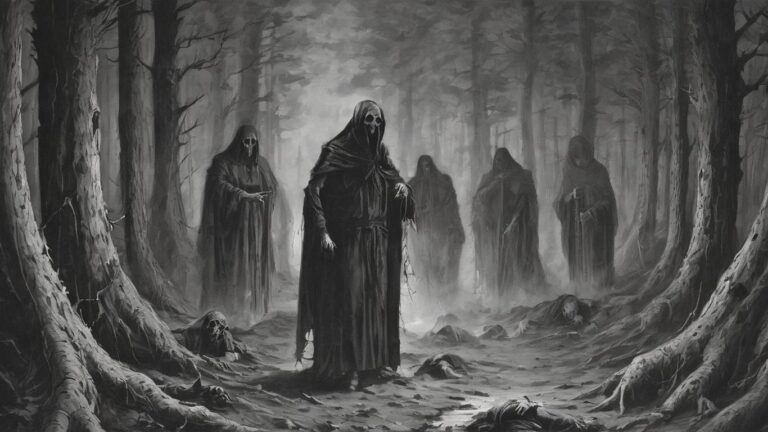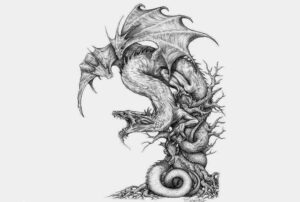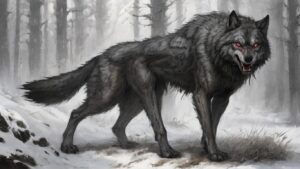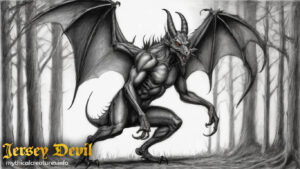Table of Contents
According to legend, the Nachzehrer is believed to devour its own burial shroud or even chew on its own limbs. This bizarre behavior is thought to be a way in which the creature sustains its existence by indirectly consuming the life force of the living. In some versions of the myth, it is said that if a Nachzehrer consumes its entire body, it will die.
The Nachzehrer is often associated with other vampire-like characteristics, such as rising from the dead, preying on the living, and being active at night. Folklore surrounding these creatures varies, and different regions may have slightly different versions of the legend.
Origin

The Nachzehrer is often associated with Germanic and Bavarian folklore, particularly in the Franconian region of Germany. Germanic folklore has a rich tradition of supernatural creatures and mythical beings, and vampires and revenants are common themes in many cultures around the world. It’s possible that the Nachzehrer legend emerged as a regional variation or interpretation of these broader themes.
Folklore tends to be shaped by cultural, historical, and societal factors, and legends like the Nachzehrer likely served as a way for communities to explain mysterious or unexplained phenomena, such as the spread of diseases or the unexpected death of individuals. Over time, these stories were passed down through generations, evolving and adapting to different cultural contexts.
While the Nachzehrer is not as well-known as some other vampire legends, it remains an interesting and unique part of Germanic folklore, adding to the rich tapestry of supernatural creatures found in various cultures around the world.
Physical Description
Corpse-Like Appearance: Like many vampire legends, the Nachzehrer is often described as having a corpse-like appearance. This may include pale or decaying skin, sunken eyes, and a generally emaciated and deathly demeanor.
Burial Shroud Consumption: One distinctive feature of the Nachzehrer is its alleged habit of devouring its own burial shroud. In some versions of the legend, it is said that the creature sustains itself by consuming the burial clothes, reinforcing its connection to the dead.
Chewing on Limbs: Another peculiar characteristic is the belief that the Nachzehrer chews on its own limbs. This behavior is often associated with the creature’s need to feed on its own body to draw life force from itself or others.
Nocturnal Activity: Like many vampire myths, the Nachzehrer is typically said to be active during the night, returning from the dead to prey on the living.
Personality

Malevolence: Like many creatures of the night and undead entities, the Nachzehrer is often portrayed as malevolent. It is said to prey on the living, contributing to fear and unease within communities.
Restlessness: As a revenant or undead creature, the Nachzehrer is believed to be restless and compelled to return from the grave. This restlessness may be a source of its predatory behavior.
Self-Destructive Tendencies: The Nachzehrer’s habit of consuming its own burial shroud or chewing on its own limbs can be interpreted as a self-destructive or desperate act, reinforcing its connection to death and the supernatural.
Nighttime Activity: The nocturnal nature of the Nachzehrer suggests a preference for darkness, adding an element of mystery and fear associated with the creature’s activities under the cover of night.
Special Abilities
In Germanic and Bavarian folklore, the Nachzehrer is often associated with various supernatural abilities and characteristics, which contribute to its status as a mythical and fearsome creature. Some of the special abilities attributed to the Nachzehrer include:
Self-Sustenance: The Nachzehrer is said to sustain itself by consuming its own burial shroud or even chewing on its own limbs. This self-destructive behavior is believed to enable the creature to draw life force or energy, reinforcing its connection to the dead.
Predatory Behavior: Like traditional vampires, the Nachzehrer is often depicted as a nocturnal predator, preying on the living. It may attack and feed on the life force of unsuspecting individuals, contributing to its malevolent reputation.
Shape-Shifting: In some versions of the legend, the Nachzehrer is said to have the ability to shape-shift or transform into other creatures. This ability enhances its elusiveness and makes it more difficult to detect.
Restless Undeath: As a revenant, the Nachzehrer is believed to return from the dead, emphasizing its restless nature. This characteristic sets it apart from living beings and contributes to the eerie and supernatural elements associated with the creature.
Influence over the Dead: Some variations of the Nachzehrer legend suggest that it has a certain level of influence or control over other undead entities or spirits. This ability could further contribute to its role as a malevolent force associated with death and the afterlife.
Explanation of the Myth
The Nachzehrer myth is rooted in Germanic and Bavarian folklore, particularly in the Franconian region of Germany. This mythical creature is often considered a type of revenant or a specific kind of vampire with unique characteristics. The name “Nachzehrer” can be translated from German as “after (nach) + chewer (zehrer),” reflecting the creature’s peculiar habits.
Key elements of the Nachzehrer myth:
Undeath and Resurrection: The Nachzehrer is believed to be a reanimated corpse, returning from the dead. This resurrection is often accompanied by a restless and malevolent spirit, seeking to prey on the living.
Self-Sustenance: A distinctive feature of the Nachzehrer is its alleged consumption of its own burial shroud and, in some versions, the chewing on its own limbs. This self-destructive behavior is thought to enable the creature to draw sustenance or life force, perhaps from itself or from the living.
Nocturnal Predator: Like traditional vampires, the Nachzehrer is said to be active during the night. It emerges from its grave under the cover of darkness to seek out and feed on the life force of the living.
Connection to Death: The Nachzehrer is closely associated with death and the afterlife. Its habits of consuming burial shrouds and engaging in self-destructive behavior reinforce its connection to mortality and the supernatural.
Cultural Variation: The details of the Nachzehrer myth can vary across different regions and communities. The creature’s characteristics, habits, and even its name may have different interpretations in various cultural traditions.
The Nachzehrer legend likely served as a way for communities to explain mysterious or unexplained phenomena, such as the spread of diseases or unexpected deaths. It also reflects cultural beliefs about death, the afterlife, and the supernatural. Over time, the myth has been passed down through generations, evolving and adapting to different cultural contexts and storytelling traditions.
Ralated and similar creatures
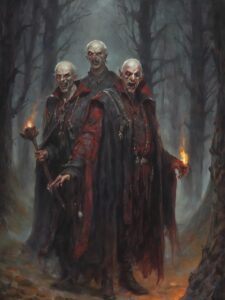
Several mythologies around the world feature creatures that share similarities with the Nachzehrer or exhibit characteristics commonly associated with vampires and revenants. Few similar examples:
Vampires: Vampires are perhaps the most widely known creatures with similarities to the Nachzehrer. Found in various forms across cultures, vampires are typically undead beings that feed on the blood or life force of the living. Examples include the Slavic vampire (upir/upyr), the Romanian strigoi, and the Southeast Asian pontianak.
Ghoul: In Arabic folklore, ghouls are malevolent creatures that are associated with graveyards and are said to consume the flesh of the dead. While ghouls are not always considered undead, their association with death and their predatory behavior draw parallels with creatures like the Nachzehrer.
Draugr: In Norse mythology, the draugr is an undead creature that guards its burial mound and possesses superhuman strength. Like the Nachzehrer, the draugr is often associated with a restless spirit returning from the dead.
Lamia: In Greek mythology, the lamia is a female demon who was believed to feed on the blood of children. Over time, the lamia has been associated with vampiric characteristics and is sometimes depicted as an undead or supernatural being.
Kyūketsuki: In Japanese folklore, the kyūketsuki is a type of vampire or revenant. While the characteristics may vary, some kyūketsuki are depicted as reanimated corpses that feed on the life force of the living.
Doppelsauger: In Austrian and Bavarian folklore, the doppelsauger is a creature similar to the Nachzehrer. It is said to be a type of vampire that consumes its own flesh and blood.
Nosferatu: The term “Nosferatu” is often used synonymously with vampires, particularly in Eastern European folklore. It gained popularity through literature and cinema, most notably in the 1922 German expressionist film “Nosferatu.”
These creatures share common themes of undeath, predation on the living, and a connection to the supernatural. The specifics of their stories and characteristics, however, can vary widely based on cultural traditions and regional variations.
